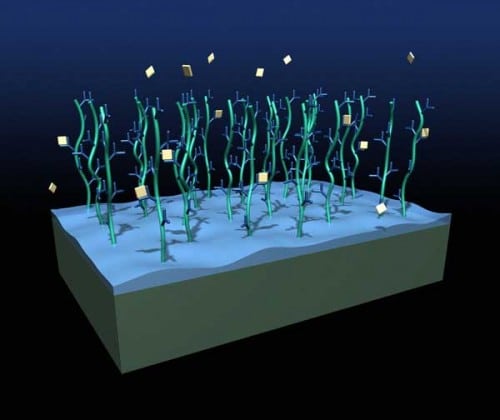A new type of hydrogel may pave a new way for the production of artificial cartilage and other applicationsThe secret to making a material less brittle is to make it more brittle - at least at the microscopic level. When a material like glass shatters, only the molecules on the surface of the shards are involved in the process. The structure of the material within each of the fractions remains essentially unchanged. To reduce the brittleness of materials, researchers design them so that the mechanical stress is also distributed below the surface. This dispersion prevents the progress of the cracks and prevents the object from breaking in advance.
Credit: Thomas Fuchs
Zhigang Suo of Harvard University and his colleagues applied this principle to a family of materials called hydrogels. These materials consist of water and a network of long molecules called polymers, which serve as scaffolds. Soo's hydrogels are similar in their external properties to rubber. They are able to stretch to a length 20 times greater than their original length without tearing. By comparison, a regular rubber band tears after being stretched six times, Suo says. The new material is also unusually hard, a feature that in technical terms means the ability to absorb pressure, stretching or impact from a blow without breaking. The energy needed to break the new hydrogel is 10 times higher than other similar materials.
Hydrogels prepared so far are not rigid and collapse on impact like tofu. The secret of Suo's hydrogel lies in the fact that it consists of two types of polymer skeleton and not one. The first type is produced from chains of carbohydrates extracted from algae. The chains are held together by calcium ions that have a positive electrical charge, and they are organized similar to the two sides of a zipper.

A secondary scaffold is constructed from a synthetic polymer whose long chains connect to each other in strong bonds. When the material is hit, the chains produced from algae separate from each other and the calcium ions are dispersed in the water. The secondary network dissipates the stress and conducts it deeper below the surface of the crack area. In this way the energy is dispersed in a larger volume of matter. After the external force ceases, the material rebuilds itself because the calcium ions are attracted to the negative charges on the unfolded acceleration chains and re-zip the main skeleton.
The new material is not yet ready for immediate use, but it demonstrates that hydrogels may be strong enough to be used in applications such as tissue engineering and prosthetics. "Nowadays, it is very difficult to replace damaged cartilage," Suo says. Any artificial substitute must be at least as strong as the natural material. Suo and his colleagues published their work on September 6, 2012 in the journal Nature.
The energy needed to break the new hydrogel is "truly impressive," says Jian Pinggong of Hokkaido University, who in 2003 led the team that first prepared hydrogels with a double internal network. But Gong emphasizes that the self-repair process of the new material is slow, it takes several hours, and is not complete. Practical applications will require materials capable of fully repairing themselves in a shorter period of time.

